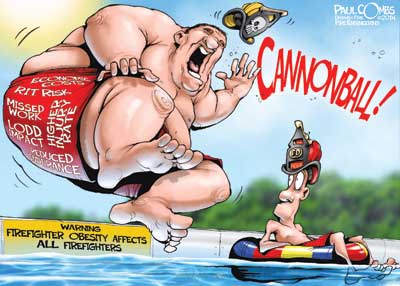Since George Bernard Shaw scripted those words more than 60 years ago, the quote has been used to imply that people who are unable to succeed in the real world will instead get a job instructing others in how to do the job they cannot do themselves. In the past 30 years of responding to emergencies, I couldn’t agree more with the quote-that is, from the perspective evidenced by the following real-life scenarios and my career history.
I began my career as a volunteer firefighter in high school, responding to emergencies in a rural setting. I completed EMT school, eventually becoming a paramedic. I was hired by a suburban department where I would spend the next several decades. As a young firefighter, I became active in public education, teaching fire and, eventually, injury prevention in the schools. I ultimately became a fire instructor at the training academy level and then the college level. Teaching paramedic school and in-service continuing education have been significant portions of my life, as has been promoting the 16 Life Safety Initiatives. For me to agree with Mr. Shaw would seem unlikely. Let me explain.
- In the late ’90s, I singlehandedly saved a family from their burning apartment. When the fire broke out, I was sleeping in my bed nearly 35 miles away. A smoke detector alerted the family, but they found themselves trapped upstairs with no way out except the windows. They jumped to the ground, sustaining minor injuries, and I slept through the entire fire. When the newspaper ran the story, the father credited his first-grade twin daughters with saving their lives. Apparently, a firefighter visited their class at Orchard Hollow Elementary School and convinced them to test their smoke detectors. When they got home that night, they were horrified to see they didn’t even have one. They insisted that their dad buy one immediately. He did, and the smoke detector alerted them to the fire, allowing them to escape.
- Years later, several companies were alerted to a fire. The call sounded bad on the initial dispatch-a well-involved trailer fire with an elderly female trapped. I was two stations away and responded with the air truck. By the time I pulled up on the scene, the first-in crew had already rescued the victim from the bedroom, began resuscitation efforts, and initiated transport to the hospital. In the middle of the street, I found pieces of turnout gear, self-contained breathing apparatus, and tools that were shed quickly as the firefighters morphed into paramedics. They were lucky that day, and the victim was even luckier. Imagine my surprise when I recognized the last name on one of the abandoned masks as that of one of my recently graduated students. I’d say he passed.
- It was a cold February morning this year when the ambulance responded to an EMS call. The gentleman had only minor symptoms, and the 12-lead EKG showed no signs of a STEMI (ST elevated myocardial infarction). But the experienced paramedic noticed something peculiar about the EKG. He had just attended a paramedic refresher course where he learned some relatively advanced concepts such as reciprocal changes and R-wave progression. In three of the chest leads, the patient had lost R-wave progression. The medic treated the patient as if he had a serious cardiac condition. It turned out that he did.
- We simply can’t be there for everything. In the past two years, my shift arrived on the scene of a significant incident without me. The first time was after a drunk driver parked his car in someone’s living room, pinning a baby under the car. On the second occasion, the engine company found a well-involved basement fire, which rivals any incident when it comes to firefighter safety. I happened to be on vacation for both of those incidents, but the crew performed flawlessly without their lieutenant. I’d like to think that something we drilled on, something we learned together, or something we discussed made a difference those nights.
The fact is, teaching is a vital component of the way fire and emergency services operate. This job is made up of experiences, and it’s our duty to pass them on. That’s the value of instructors “who can” use real-life examples and combine them with new technologies and research “to teach” others. We rely on instructors to teach us the basics; but, more importantly, they continue to expand our current knowledge. It’s a pyramid effect that directly affects firefighter safety. You cannot be there for every call, but you can teach. Please continue to teach.
Don Zimmermann
Lieutenant/Paramedic
Mentor (OH) Fire Department
Thanks for “We Will Come” affirmation
This is in reference to Bobby Halton’s “I Knew You’d Come” (Editor’s Opinion, Fire Engineering, April 2014). I am thrilled that there is someone out there who is not afraid to utter the words: “We will come because every firefighter knows there are some things more important than our own safety.”
I have nothing against safety or firefighter survival, and have spent much of the past 20 years teaching and preaching about them. But, I have lived through and listened to dramatic stories of close friends who have arrived at that juncture. Thank you for saying it, and thank you for saying it where firefighters from every corner of America will see it and believe it.
John J. Salka Jr.
Battalion Chief (Ret.)
Fire Department of New York Fire Command Training

Fire Engineering Archives

